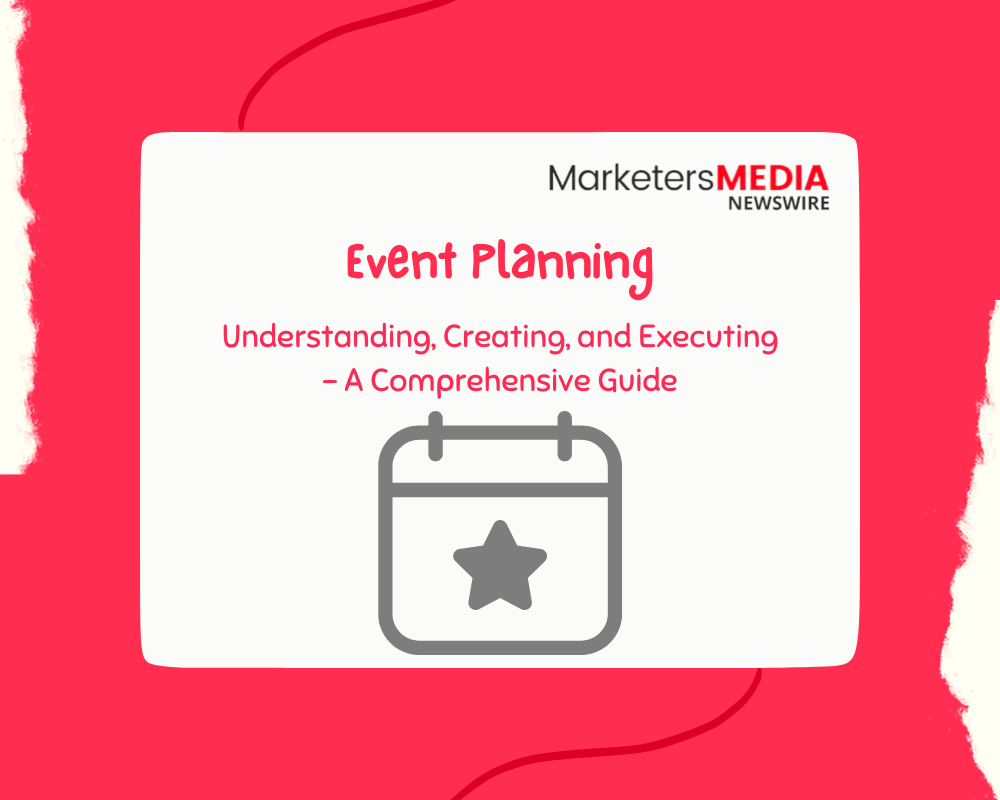Table of Content
- Understanding Marketing Strategy Fundamentals
- Importance of a Well-Defined Marketing Strategy
- Key Components of a Successful Marketing Strategy
- Crafting an Effective Marketing Plan
- Identifying the Target Market and Buyer Personas
- Elements of a Comprehensive Marketing Mix
- Setting Clear and Achievable Marketing Goals
- Choosing the Right Marketing Channels and Tactics
- Measuring and Analyzing Key Performance Indicators
- Content Creation for SEO
- Summary
- Frequently Asked Questions
Marketing strategy is like a roadmap for businesses – it guides marketers to their destination, ensuring brand positioning, reaching target customers, and maintaining a competitive advantage. It's the marketing strategy that helps companies reach their target audience, stand out from competitors, and achieve their goals with effective marketing plans, tactics, and campaigns.
Understanding the evolution of marketing strategy, including product development strategy, diversification strategy, and competitive analysis, provides valuable historical context for marketers. From traditional methods like print ads and billboards to today's digital landscape encompassing social media, influencer partnerships, and diversification strategy – the journey of marketing strategies has been dynamic, adapting to trends and involving marketers at every stage. Join me as we explore the fundamentals of crafting effective marketing strategies, including product development strategy and pricing, in an ever-changing business environment influenced by trends.
Understanding Marketing Strategy Fundamentals
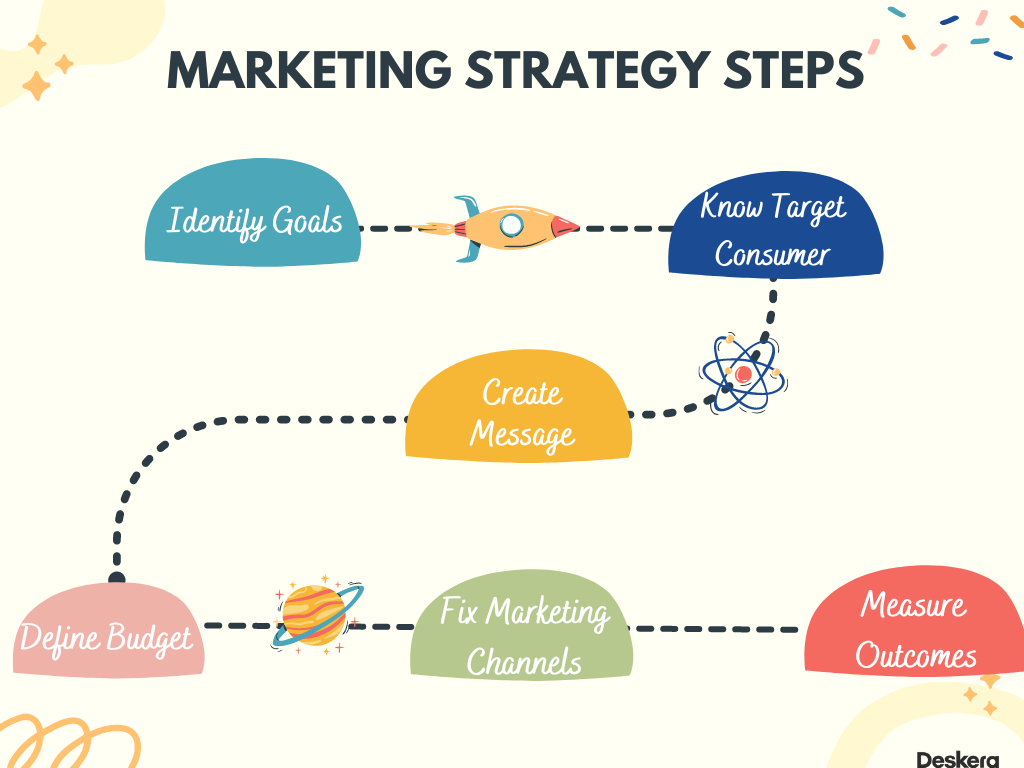
Importance of Marketing Strategy
A marketing strategy is like a plan for selling stuff and hitting business goals. It's about figuring out what people want, watching the market, and making your product stand out. This plan is key because it helps grab and keep people's attention, helping the business make more money. To make a good strategy, you need to know who you're selling to, check out other businesses, set clear goals, and show off what makes your product special. By understanding your audience, you can make ads that really connect with them. And by seeing what others do right, you can learn how to be different and get noticed. It's just like when our school club made a plan; knowing our crowd made our sales go through the roof.
Components of Marketing Strategy
A good marketing plan for a small business has a few important parts. It's all about making the product stand out and meet what customers need in ways other products don't. To sell more, you might change prices or advertise a lot. Also, picking how to sell your stuff, like directly or through stores, is key because it makes sure customers can get it easily without spending too much. Talking about your product is another big piece. This means showing off what's cool about your brand everywhere - online, in magazines, or at events. When you keep your message the same across these places, people will remember your product better.
Importance of a Well-Defined Marketing Strategy
Providing Direction and Clarity
A marketing strategy is a business's game plan. It tells you what to do so every move, including your marketing strategy and product development, helps the business grow. Without a good marketing strategy, you can waste time and money on a product that doesn't work. Say a company wants more customers in new places; the marketing strategy should say exactly how to reach them with the product. Making a solid marketing strategy means knowing who you want to sell your product to, figuring out what they like, and setting real goals. This keeps the business on track with its marketing strategy and stops confusing messages about the product that could turn people off. With a clear marketing strategy, businesses can tell what's working with their product and fix what isn't. It makes it easier to check if your marketing strategy is winning and decide what to do next based on facts.
Differentiation from Competitors
A key part of a good marketing strategy is making sure your business stands out with a special feature that's different from the competition. Having a strong brand and marketing strategy helps people remember you when they're buying stuff. Take two burger places with different marketing strategies, for example: one's cheap, the other's all about being green and using organic stuff. They'll use different ads as part of their marketing strategy to get the customers they want. If a business is clear about its marketing strategy and how it wants to be seen (like being budget-friendly or eco-friendly), it can shape its products and messages to make stronger bonds with people. When you've got a strong brand and marketing strategy, you build trust with your regulars and spark interest in new folks, which is super important for keeping a business going strong.
Key Components of a Successful Marketing Strategy

Market Research and Target Audience Identification
Market research is the foundation of any successful marketing strategy. It involves gathering data about the industry, market trends, marketing strategy, and customer preferences. Identifying the target audience helps businesses tailor their marketing strategy, products, or services to meet specific consumer needs.
Understanding your customers' demographics, behaviors, and preferences allows you to create relevant content, develop an effective strategy, and choose appropriate marketing channels. For example, if market research reveals that your target audience primarily uses social media, you can focus your marketing strategy on creating engaging content for platforms like Instagram or Facebook.
| Marketing Approach | Inbound Marketing | Outbound Marketing |
|---|---|---|
| Audience Reach | Pulls in potential customers through content and engagement | Pushes marketing messages to a wide audience |
| Cost | Generally lower cost due to digital nature and focus on content creation | Can be more expensive due to advertising and outreach efforts |
| Targeting | Focuses on attracting a specific target audience | Targets a broad audience with the hope of reaching potential customers |
| Customer Engagement | Emphasizes building relationships and providing valuable content | Relies on interrupting potential customers with marketing messages |
| Control | Gives more control to the customer in choosing to engage | Gives more control to the marketer in pushing out messages |
What Are Marketing Objectives?
Marketing objectives are the specific goals that a company aims to achieve through its marketing efforts and strategy. These marketing strategy objectives can include increasing brand awareness, generating leads, driving sales, or building customer loyalty. By setting clear marketing objectives, a company can better focus its strategy and measure the success of its marketing campaigns. It's important for businesses to regularly review and update their marketing strategy objectives to ensure they align with the overall goals of the organization and the needs of their target audience.
Crafting an Effective Marketing Plan
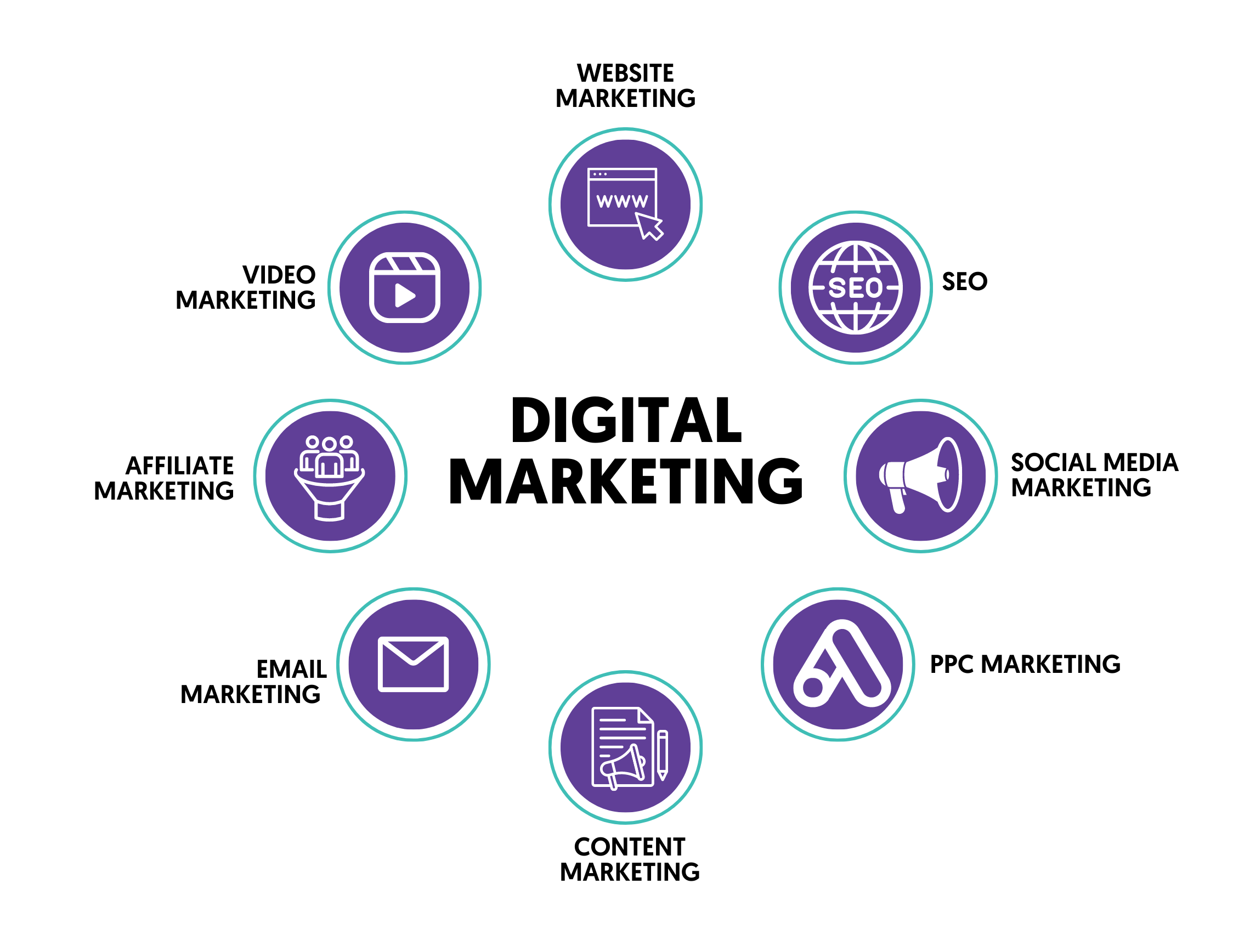
Importance of a Marketing Plan
A marketing plan is key to keeping marketing on track and in line with the big picture strategy. It's like a marketing strategy map for doing stuff like promoting products, making content, and running social media stuff. It tells you what to do, when, and how much money you can spend, so the marketing team doesn't get lost in the strategy.
To make a solid marketing strategy plan, you gotta do your homework to get what your audience digs and watch out for competitors. This helps you figure out where to put your effort and money in your marketing strategy to hit your main goals. You also need to set clear goals for different parts of your marketing, like getting people to know your brand or selling more with ads. Say you want to boost your online rep with influencer marketing; your plan should spell out how you'll find the right influencers, make deals with them, and check if it's working.
Flexibility in Implementation
A good marketing plan needs to be flexible to keep up with changes but still focus on the main goals. It's important to check how the marketing strategy is going often and change stuff quickly if needed, making sure everyone knows their part in hitting the targets. From what I've seen working with small companies, a solid marketing plan helps run things daily and makes big decisions easier. It shows what's working and what needs tweaking in marketing, using up-to-date info.
Identifying the Target Market and Buyer Personas
Defining Demographics
To really get your target market, you gotta know who they are – like their age, gender, how much cash they make, if they went to school, and if they're hitched or not for effective marketing. This marketing stuff shapes how you talk to them in ads. Like, marketing ads for teens are way different from marketing ads for older folks. You also need to know where your peeps live. People in cities might dig your marketing stuff differently than folks in the country. Lastly, making up buyer profiles helps you figure out what your customers are into based on their details for targeted marketing. This way, you can make your marketing and what you're selling just right for them.
Psychographics and Behavioral Characteristics

In addition to demographics, understanding the target market for marketing involves delving into psychographics—such as interests, hobbies, values—and behavioral characteristics like buying patterns and brand loyalty. For example, a company marketing eco-friendly products would want to target consumers interested in sustainability.
Analyzing consumer behavior allows businesses to develop tailored marketing strategies that align with how potential customers make purchasing decisions. Understanding what motivates consumers' choices enables companies to position their marketing offerings effectively.
By segmenting audiences based on psychographics and behaviors rather than just demographics alone ensures that marketing campaigns resonate more deeply with potential customers' values and lifestyle choices.
Personal insight: When I was working in marketing at a local bakery trying to expand its customer base beyond traditional patrons, we found that understanding our target market's interests (psychographics) helped us create successful social media campaigns featuring behind-the-scenes content about sustainable baking practices.
Elements of a Comprehensive Marketing Mix
Product, Price, Place, and Promotion
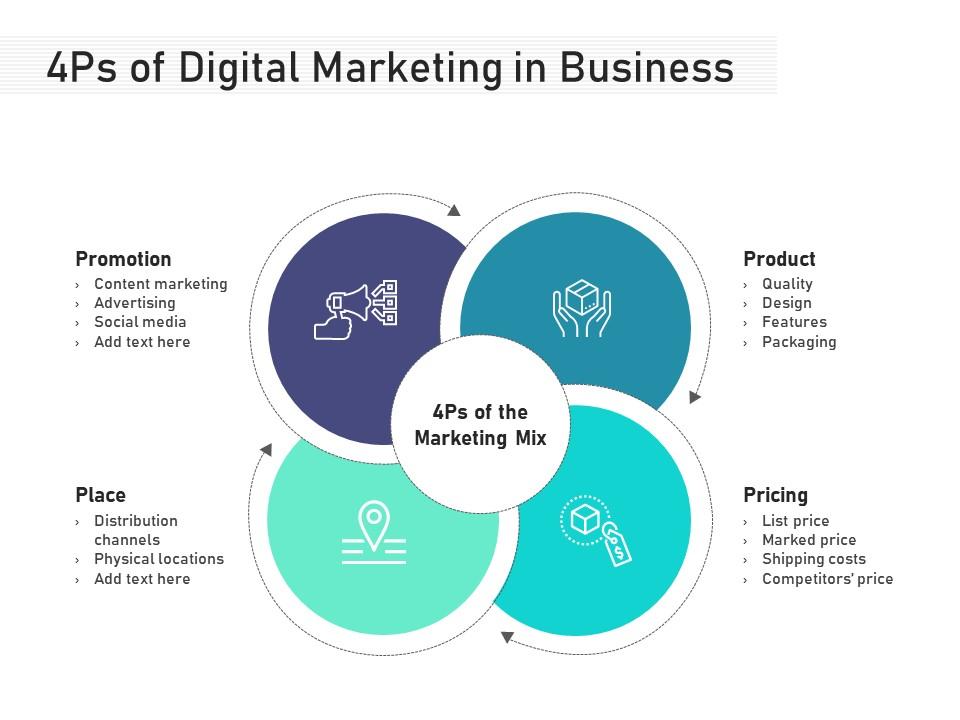
The marketing mix has four key parts: product, price, place, and promotion, for a top-notch marketing strategy that really nails what customers are looking for, each element is crucial. For products, it's all about marketing, making stuff people need or want, which includes how it looks, the brand vibe, packaging, and the help you get after you buy it.
Price is figuring out how much folks will drop on your product while still making money for your company. Place is about getting your product where people can easily grab it when they want it, which is a key aspect of marketing. Promotion is doing a bunch of stuff like ads, deals, talking to the press, direct marketing, and one-on-one selling to get people hyped about your product and convince them to buy.
Balancing the Four Ps
An effective marketing mix requires balancing all four Ps - product, price, place, and promotion - harmoniously. For example:
- A luxury car manufacturer focuses on high-quality products (product), sets premium prices (price), sells through select dealerships in upscale locations (place), and uses sophisticated advertising campaigns (promotion) as part of its marketing strategy.
- A fast-food chain emphasizes quick service with affordable meals (product), offers budget-friendly pricing (price), locates its outlets in easily accessible areas like shopping malls or busy streets (place), and runs aggressive marketing promotions through social media ads or limited-time offers (promotion).
This balance ensures that businesses create compelling marketing value propositions for their customers while achieving their own strategic objectives.
Setting Clear and Achievable Marketing Goals
Importance of SMART Goals
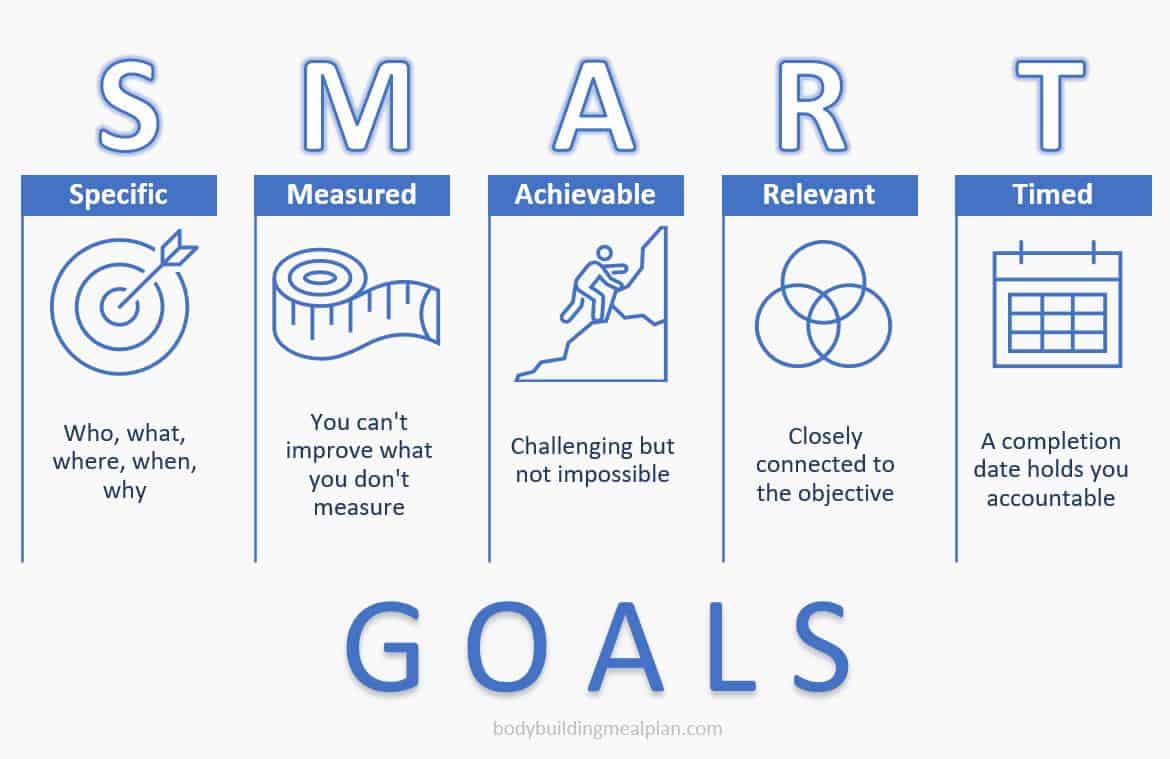
To rock your marketing plan, you gotta set SMART goals—specific, measurable, achievable, relevant, and time-bound. They're like a marketing map for your team, showing you how to track your progress. Make sure your marketing goals match up with what the business wants overall. For example, if the business wants to make 20% more money this year, the marketing team should aim to get 30% more leads with some cool campaigns. Having clear goals isn't just about direction—it pumps up your team too. When everyone knows what the marketing target is and how they can help hit it, they're more focused and ready to crush it.
Tracking Progress and Evaluating Performance
Having clear marketing goals lets you track how well your campaign's doing. Say you want to bump up your website traffic by 25% in six months using SEO, blogs, and marketing tools like Google Analytics can show if you're on track. These specific goals also help businesses check how they're doing and fix things fast if they're off track or if money issues mess with their plans. From my work with different marketing teams, I've learned that unclear or impossible goals just confuse everyone. But when the goals are crystal clear, everyone knows what to do, stress goes down, and the team works better together.
Choosing the Right Marketing Channels and Tactics
Evaluating Target Audience Engagement
To pick the right marketing methods, you gotta know where your audience hangs out online. Like, if they're mostly young folks, hit up social media instead of old-school ads. Figure out what they're into and use that to shape your game plan. If they dig pictures and stuff, maybe focus on Instagram or Pinterest over emails. Personally, I've seen my marketing do way better when I really get the lowdown on what my audience likes online.
Leveraging Digital Platforms and Tools
In today's digital age, leveraging various digital marketing tools and platforms can greatly impact a brand's success. From social media ads to search engine optimization (SEO) strategies, there are numerous options available for reaching potential customers online.
Digital channels offer a wide array of opportunities for engaging with audiences through targeted messaging. For instance, landing pages, when optimized effectively, can capture leads by offering valuable content or services in exchange for contact information.
Personal Information: I've found that utilizing digital tools such as SEO strategies and landing pages has been instrumental in boosting my brand's online visibility and lead generation efforts.
Aligning Tactics with Audience Preferences
The choice of tactics should align closely with the preferences of the target audience. If they prefer consuming video content over written posts, focusing on video-based advertising across different platforms could be more effective than text-based ads alone.
Moreover,email marketing, when done right by delivering personalized messages tailored to individual recipients' interests or behaviors, can yield higher engagement rates compared to generic mass emails sent without personalization efforts.
![Infographic] Email Marketing: Realize the ROI & Improve Bottom Line - ContactPigeon | Blog](https://blog.contactpigeon.com/wp-content/uploads/2018/10/Email_marketing_infographic_1.jpg)
Measuring and Analyzing Key Performance Indicators
Understanding Key Performance Indicators
KPIs are a scorecard for your marketing game plan. They track stuff like sales from website visits, the cost of grabbing new customers, profits from investments, and how much dough a customer brings in over time. Watching these KPIs helps figure out what's working and what's not. Data is super important to get these KPIs right. By looking at website, social media, and email info, businesses can spot customer trends and preferences. This info lets companies make smarter marketing moves based on real facts, not guesses.
Importance of Regular Monitoring
Regular monitoring of KPIs is crucial for making timely adjustments to optimize marketing strategies for better results. For example, suppose the conversion rate drops suddenly after implementing a new advertising campaign on social media platforms. In that case, it indicates that further analysis is required to identify the underlying issues causing this decline. By promptly identifying such issues through continuous tracking and monitoring of KPIs, businesses can adapt their strategies accordingly to maintain or improve their overall performance.
Analyzing trend data also provides valuable information about consumer behavior patterns over time. This insight allows marketers to anticipate shifts in consumer preferences and adjust their tactics proactively instead of reacting retroactively when changes occur unexpectedly.
Leveraging Competitive Analysis

In addition to tracking internal key performance indicators like conversion rates and ROI, conducting competitive analysis also contributes significantly to evaluating the effectiveness of a marketing strategy. Comparing your business's performance against industry benchmarks and competitors' metrics offers valuable context for assessing strengths and weaknesses within your own marketing efforts.
By examining competitor data alongside internal KPIs like customer acquisition cost or customer lifetime value helps identify potential areas where improvements could be made compared with industry standards or market leaders' performances.
Conducting regular competitive analyses empowers companies with actionable insights that drive strategic decision-making processes aimed at enhancing market positioning while addressing pain points identified through comparative assessments.
Content Creation for SEO
Keyword Research

We start by understanding what our potential audience is searching for. We identify high-value keywords that are relevant to our target audience and have the potential to drive significant website traffic. By conducting comprehensive keyword research, we gain valuable insights into the search behavior of our audience. This helps us optimize our content based on these keyword insights, ensuring that it aligns with what our audience is actively seeking.
Crafting Content In crafting content for SEO, we focus on developing material that resonates with our target audience. We aim to create engaging and relevant content tailored specifically to their needs and interests. Using storytelling techniques, we weave compelling narratives within our blog posts and website content, capturing the attention of our readers while delivering value. Maintaining consistency in tone and messaging across all content ensures a cohesive brand voice, reinforcing trust and familiarity among our audience.
Optimization Techniques
Optimizing content involves implementing various SEO best practices aimed at enhancing visibility in search engine results pages (SERPs). Our goal is not only to attract more visitors but also to provide genuine value through optimized content. By utilizing data-driven insights, such as user engagement metrics and conversion rates, we continuously refine and improve the performance of our web pages and blog posts.
Pros:
- Comprehensive keyword research provides valuable insights into user search behavior.
- Engaging storytelling techniques help create compelling narratives that resonate with the audience.
- Utilizing data-driven insights enables continuous optimization for better performance.
Cons:
- Keyword research can be time-consuming without guaranteed immediate results.
- Crafting consistent content may require additional effort in maintaining brand voice across different platforms.
Summary
Understanding the fundamentals of a marketing strategy is crucial for any business. It sets the tone for all activities and ensures that efforts are aligned with overarching goals. Crafting an effective marketing plan, identifying the target market, and selecting the right channels and tactics are all essential components. By measuring key performance indicators, businesses can adapt and refine their strategies for optimal results.
In conclusion, developing a robust marketing strategy is like charting a course for success in a constantly evolving landscape. It's not just about reaching audiences but also about resonating with them. As I wrap up, I encourage you to apply these insights to your own marketing endeavors and remember that a well-crafted strategy is the compass that guides your brand through the competitive waters of the market.
Frequently Asked Questions
What are the fundamental elements of a marketing strategy?
A well-defined marketing strategy comprises various key components such as identifying the target market, crafting an effective marketing plan, choosing the right channels and tactics, setting clear goals, and measuring performance indicators.
Why is it important to have a well-defined marketing strategy?
Having a well-defined marketing strategy is crucial for businesses as it provides direction and clarity on target audience and objectives, helps in allocating resources effectively, and ultimately contributes to achieving business goals.
How do you identify the target market and buyer personas for a marketing strategy?
Identifying the target market involves understanding the demographics, psychographics, and behaviors of potential customers. Buyer personas are fictional representations of ideal customers based on research data including their needs, motivations, challenges, and buying patterns.
What role does the marketing mix play in a comprehensive marketing strategy?
The marketing mix encompasses product/service offerings, pricing strategies, distribution channels (place), as well as promotional activities. It's essential in creating value for customers while achieving business objectives through strategic integration of these elements.
How do you measure and analyze key performance indicators in a marketing strategy?
Measuring KPIs involves tracking metrics related to specific objectives such as sales growth or brand awareness. Analysis includes interpreting this data to gain insights into what's working well within your strategy and areas that may require adjustments.
Free Press Release Template
Tell us where to send your PDF:







